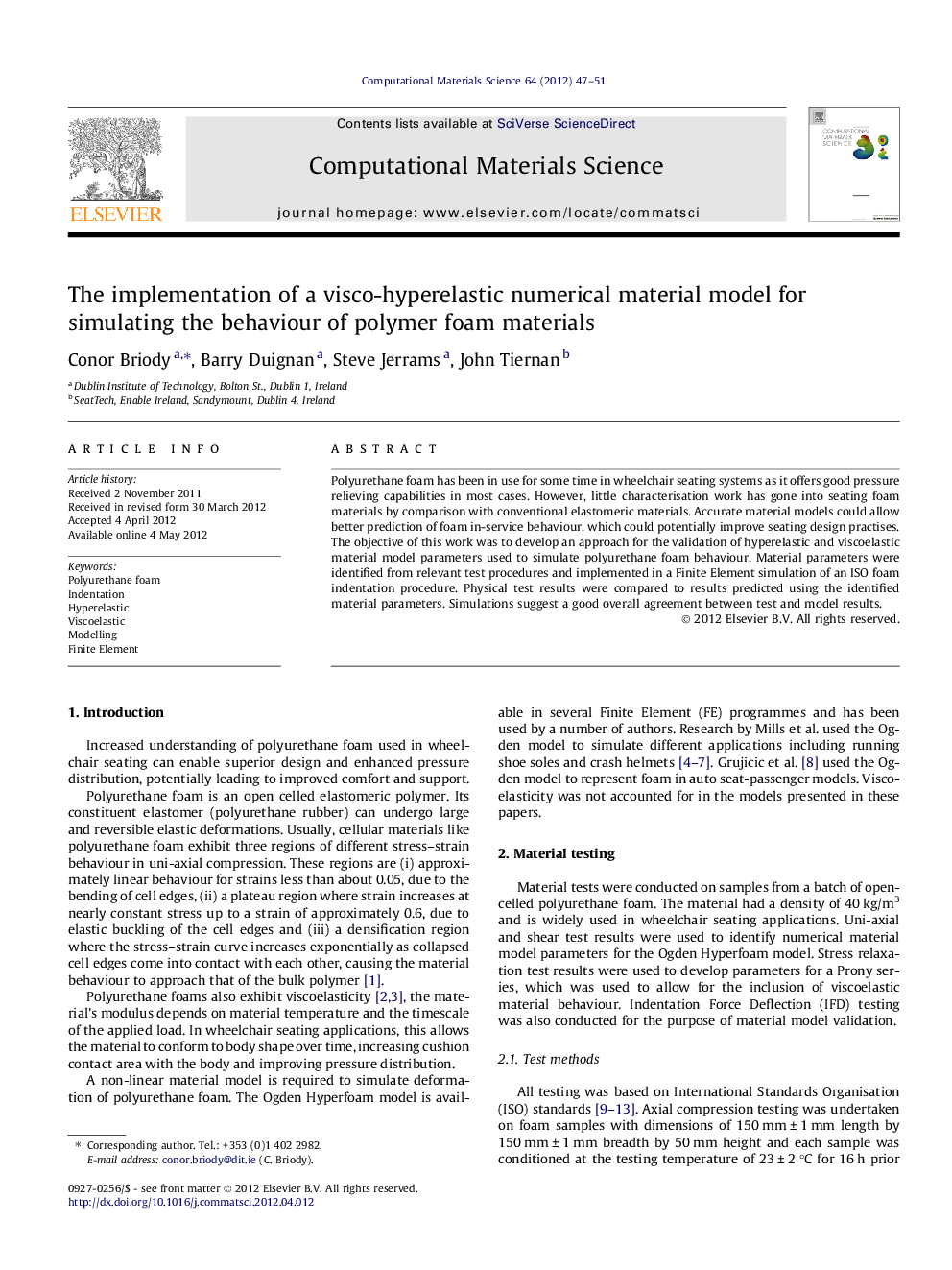| Article ID | Journal | Published Year | Pages | File Type |
|---|---|---|---|---|
| 1561681 | Computational Materials Science | 2012 | 5 Pages |
Polyurethane foam has been in use for some time in wheelchair seating systems as it offers good pressure relieving capabilities in most cases. However, little characterisation work has gone into seating foam materials by comparison with conventional elastomeric materials. Accurate material models could allow better prediction of foam in-service behaviour, which could potentially improve seating design practises. The objective of this work was to develop an approach for the validation of hyperelastic and viscoelastic material model parameters used to simulate polyurethane foam behaviour. Material parameters were identified from relevant test procedures and implemented in a Finite Element simulation of an ISO foam indentation procedure. Physical test results were compared to results predicted using the identified material parameters. Simulations suggest a good overall agreement between test and model results.
► A procedure describing the identification of material model parameters is presented. ► A compressible visco-hyperelastic material model was implemented in FE software to model indentation. ► Material model proven to provide reasonable results.
